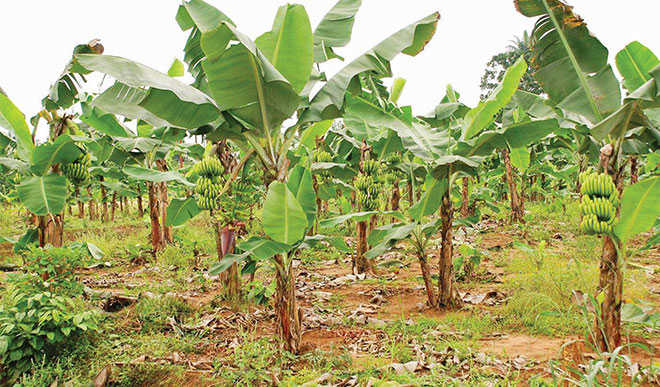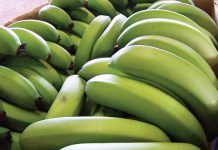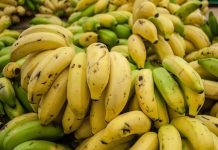Growing banana is generally easy and simple, but in order to have higher yield which corresponds to increased profits from sales, good management practices like selection of fertile land, good cultivar selection, timely irrigation, timely fertiliser application and plant care needs to be a priority in growing the fruit.
For small-scale banana production, suckers are widely used for propagation, however for commercial large scale production, it is advisable to use tissue culture seedlings sourced from reputable sources for propagation in order to prevent pests and disease infestation.
Although tissue culture seedlings are more expensive, plants mature and become ready for harvest faster, with higher production and more uniform harvest of the fruits.
According to agrifarmingtips.com, a well-managed banana tree starts fruiting from about 150 days after planting, producing at least 20 kg of banana fruits per blossom.
Banana thrives in tropical regions of the world, with temperature of between 150C and 350C, moderate rainfall (for rain-fed) and low wind. A temperature of about 180C to 300C is required for development of banana. This is suited to the middle belt and southern region of Nigeria.
It is cultivated on a wide range of soil; well drained and rich in organic matter and slightly acidic between 6.5 and 8 pH value. Bananas should not be planted on water logged soils to prevent condition root rot disease.
Also, banana trees should be spaced 1.8 metres by 1.5 metres. A point to note is that banana is a water loving plant and as such, an average rainfall of 700mm is good for the healthy vegetative growth of banana.
For irrigated banana fields, the soil should be kept moist at all times, with sufficient water but not too much.
Glyphosate pesticide should be sprayed at about 2 litres per unit hectare before planting, however manual weeding needs to be done to properly remove weeds.





